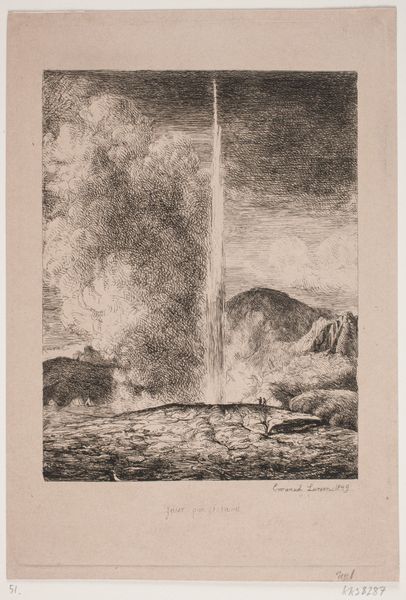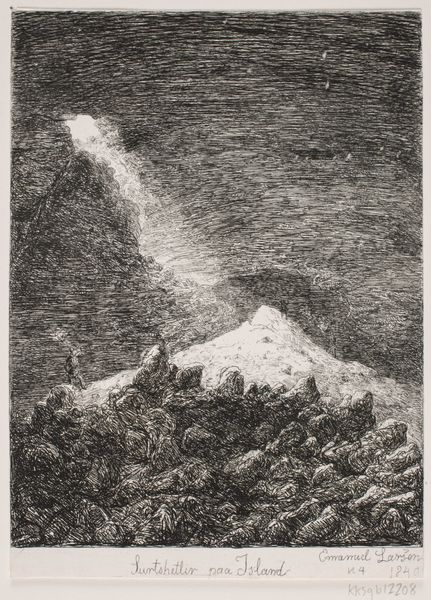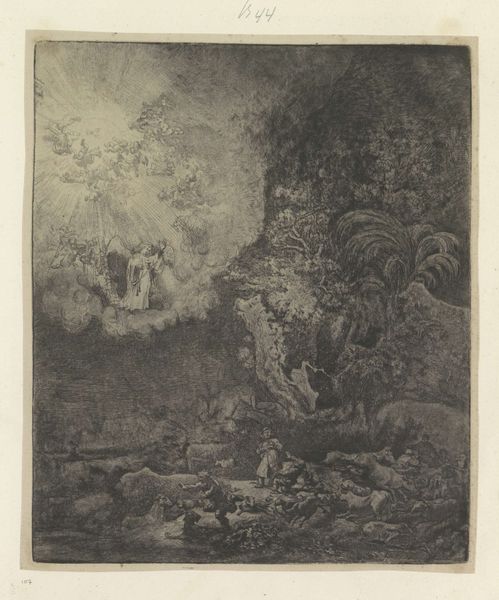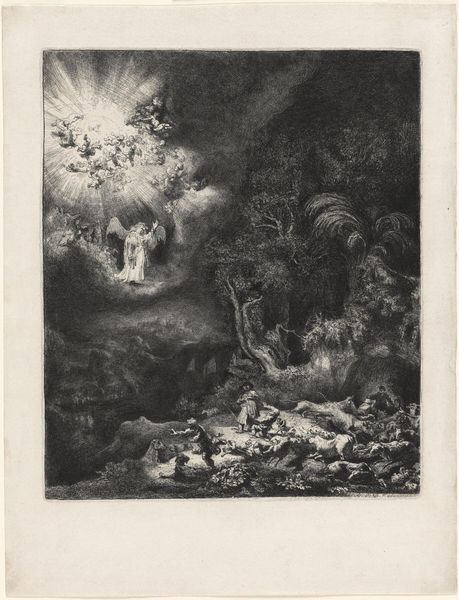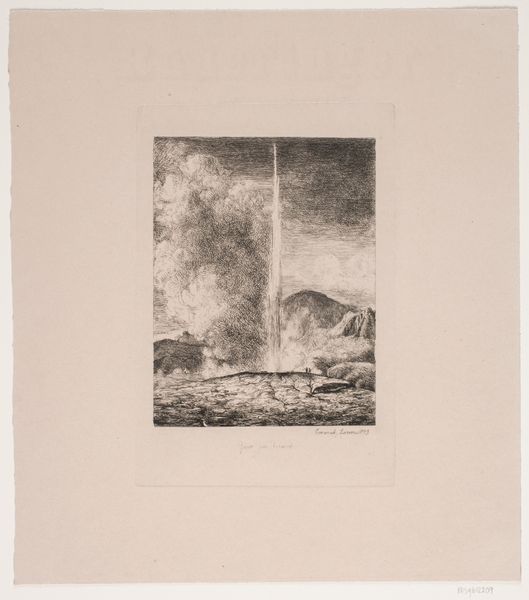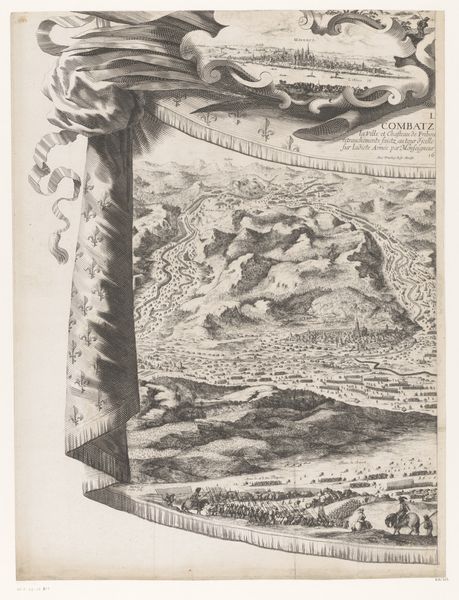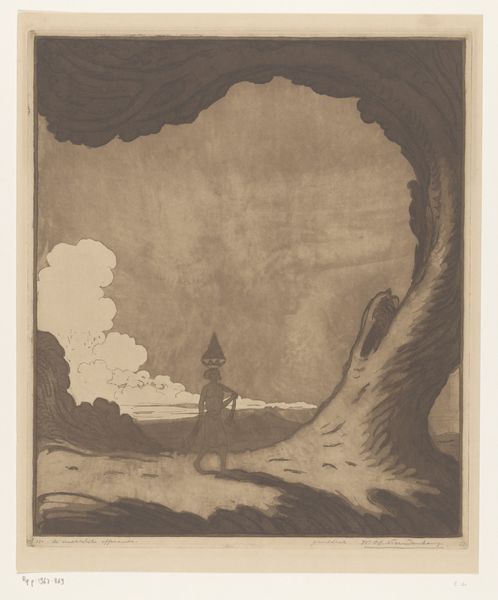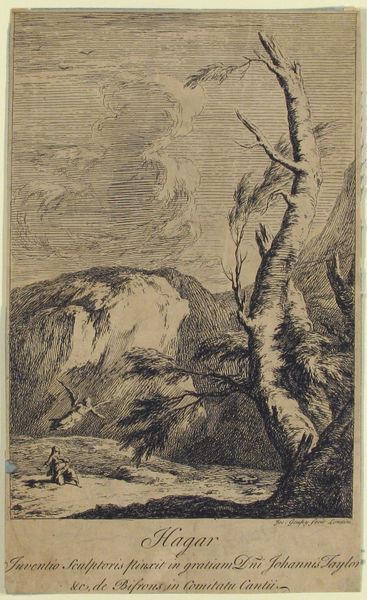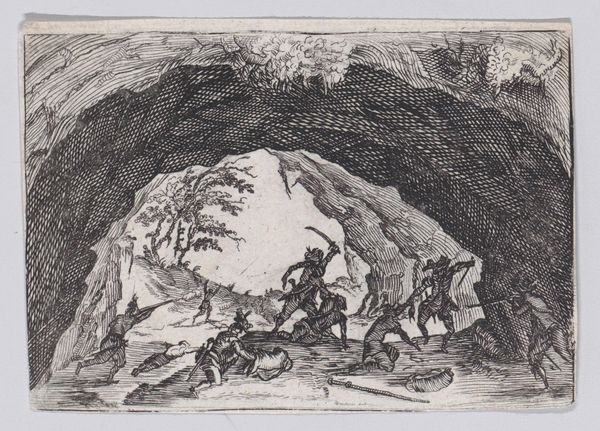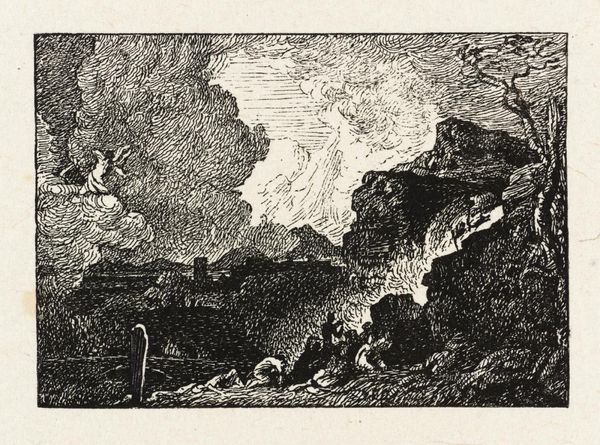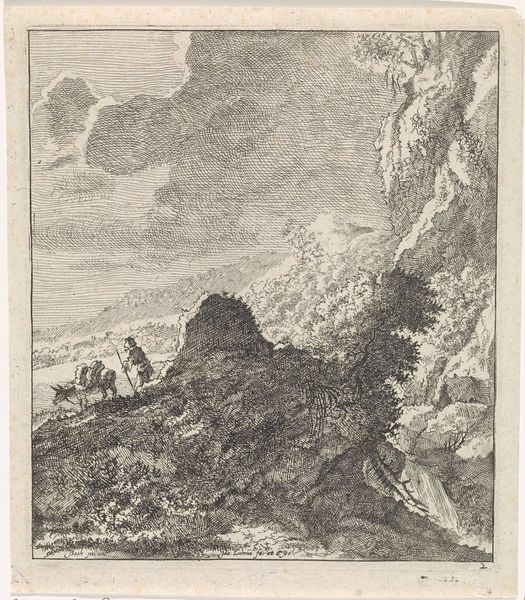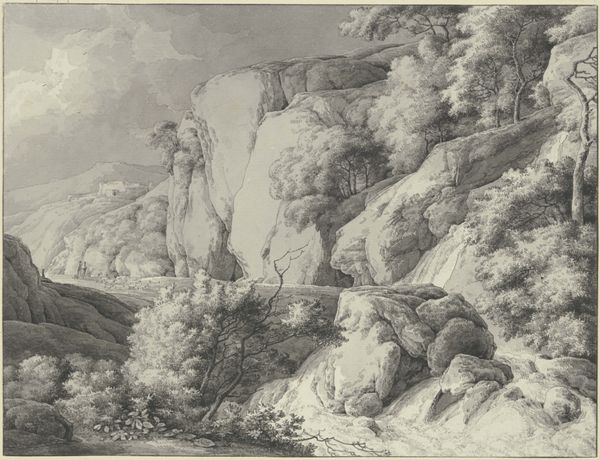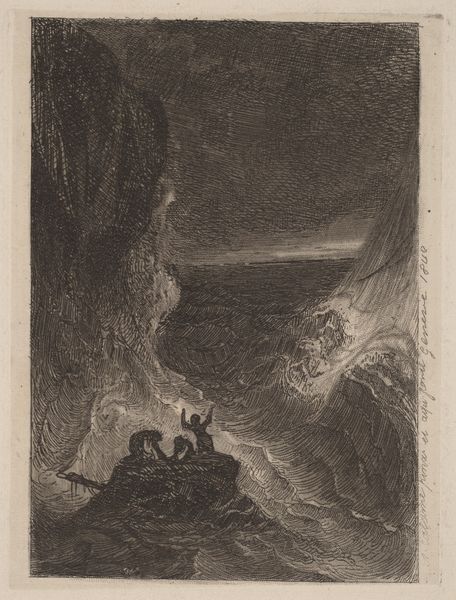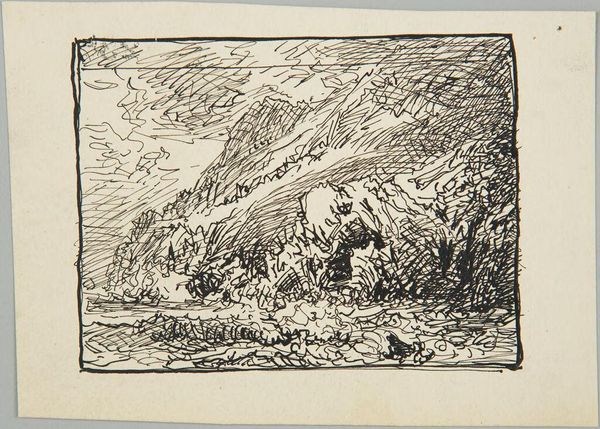
print, engraving
#
16_19th-century
# print
#
landscape
#
line
#
engraving
#
realism
Dimensions: 140 mm (height) x 109 mm (width) (bladmaal)
Editor: Here we have Emanuel Larsen’s "Geiser på Island," an engraving from 1849. It’s all in monochrome, with a really impressive plume of water dominating the scene. I’m struck by how the small figures are dwarfed by this force of nature. What captures your attention in this work? Curator: The magic for me lies in how Larsen captured the sublime. Back then, Iceland was on the edge of the known world. Think about the cultural fascination with these wild, untouched places in the 19th century! You've got that stark contrast between the delicate lines of the engraving and the raw, explosive power it portrays. Do you see how the lines almost vibrate with the energy of the geyser? It’s not just a pretty picture; it's about the awe and terror inspired by nature. Editor: That makes me think about the composition and the placement of the geyser; it's like the world is exploding. The almost clinical detail against the grand, volatile event feels strangely compelling. Curator: Exactly! And the print medium itself, allowing for mass production, democratized this experience of the sublime. People who couldn't travel to Iceland could still possess a piece of its raw energy. What a clever trick, eh? Editor: So, it's not just about the scene but about making the spectacle accessible? I never really considered that. Curator: Precisely! Art often smuggles in concepts under the guise of beauty or representation. Larsen is selling you both Iceland AND the idea of Iceland. A subtle but crucial difference, wouldn't you agree? Editor: I suppose you're right; my initial perspective missed that historical depth entirely. Curator: And that, my dear Editor, is what makes art so endlessly fascinating!
Comments
No comments
Be the first to comment and join the conversation on the ultimate creative platform.
